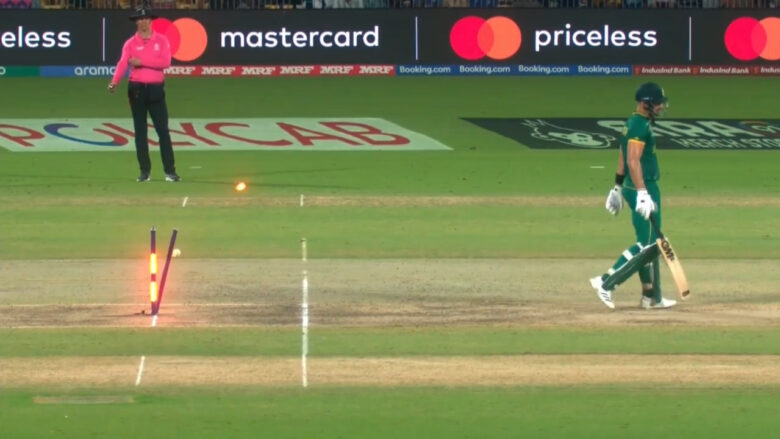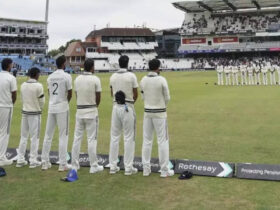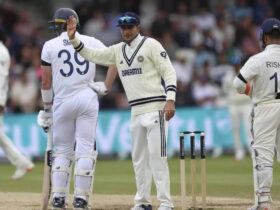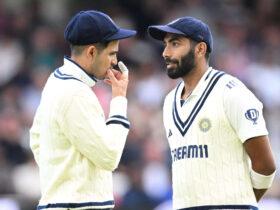South African cricketer Markram found himself in a potentially controversial situation during a match, but the wicket-keeper Mohammad Rizwan’s grin and the absence of an appeal saved the day.
This incident brought back memories of Jonny Bairstow’s run-out in the Ashes series against Australia. However, the circumstances surrounding Markram’s case were quite different.
Markram faced a short ball from Haris Rauf that whizzed past him and bounced just before reaching Rizwan. As Rizwan collected the ball, Markram tapped his foot in the crease and advanced up the wicket. Rizwan then under-armed the ball back towards the stumps and Rauf, hitting the stumps while Markram was well out of his crease.
So, why wasn’t Markram given out? Here’s the explanation:
No Appeal Made
Neither Rizwan nor any member of the Pakistan team appealed the situation, leaving the umpires with no decision to make. Had an appeal been made, the match officials would have been compelled to review the replays.
The Ball was Likely Dead
An appeal from Pakistan would have raised questions about whether the fielding side considered the ball to be in play. A batter cannot be run out if the ball is deemed dead. In the case of Bairstow’s run-out at Lord’s, the ball was not dead as wicket-keeper Alex Carey had intentionally thrown it back towards the stumps almost immediately after receiving it.
There are several laws concerning a dead ball. The Playing Conditions for the ICC Men’s Cricket World Cup 2023 align with these laws, which state:
– “The ball becomes dead when it is finally settled in the hands of the wicket-keeper or of the bowler.”
– “The ball shall be considered to be dead when it is clear to the bowler’s end umpire that the fielding side and both batters at the wicket have ceased to regard it as in play.”
– “Whether the ball is finally settled or not is a matter for the umpire alone to decide.”
Markram’s foot tap in the crease before leaving, a common signal by batters that they are not making a run, doesn’t necessarily render the ball dead. It merely indicates the batter’s belief that the ball is dead.
The key decision in this case would have been whether the ball was “settled” in Rizwan’s gloves. While it’s impossible to say with certainty, Rizwan’s head dip and the time lapse between him receiving the ball and throwing it back towards the stumps would likely have led the umpires to rule the ball dead, even if Pakistan had appealed.
In the end, the umpires replaced the bails, both teams exchanged smiles, the crowd erupted in cheers, and the game continued without further ado.





















